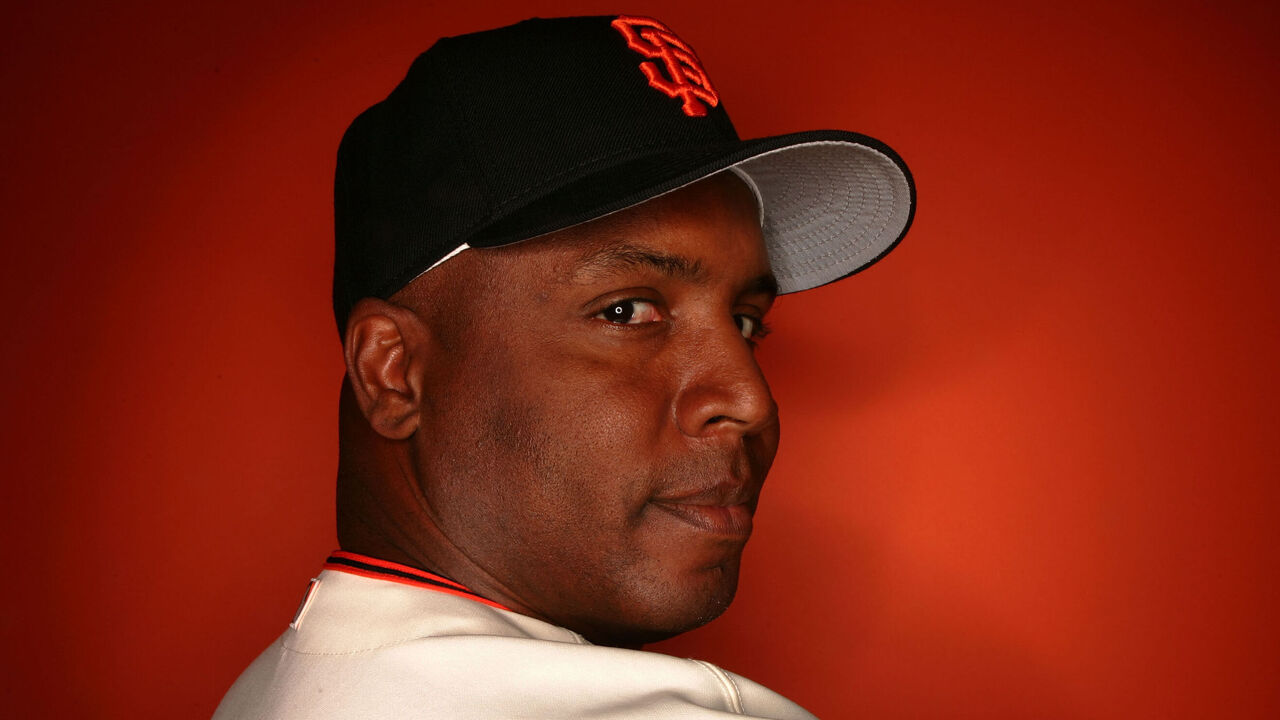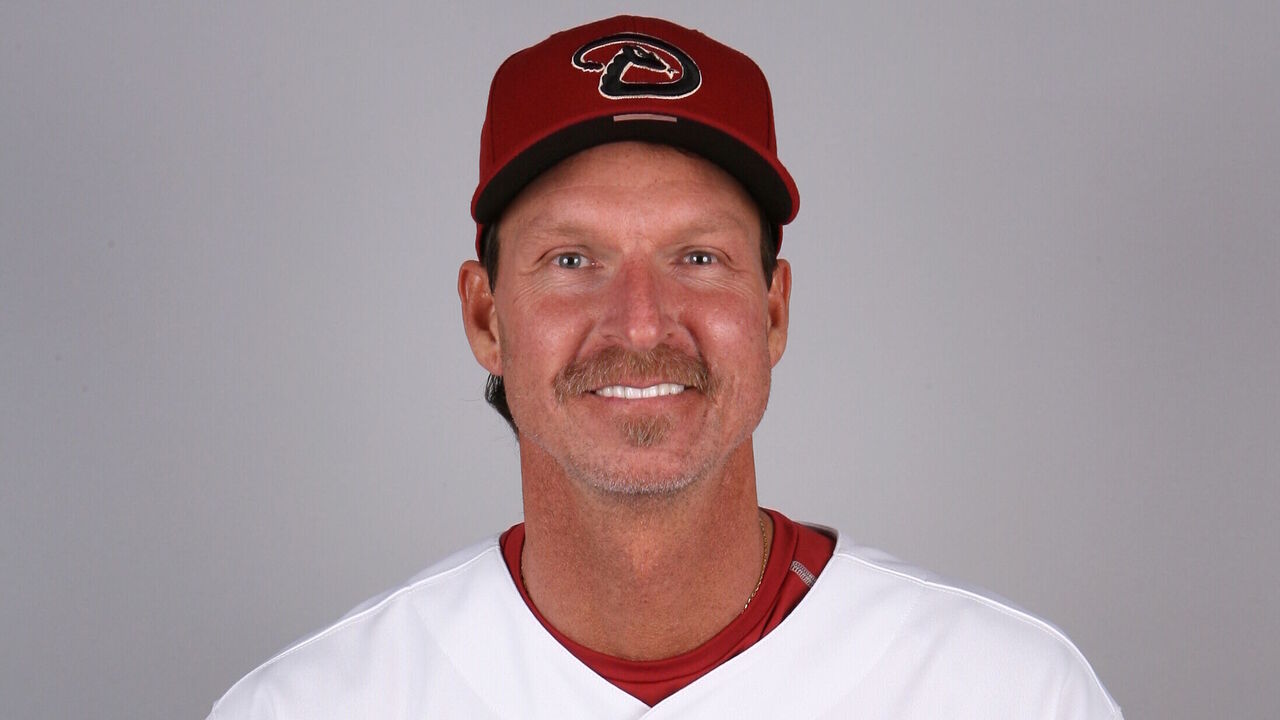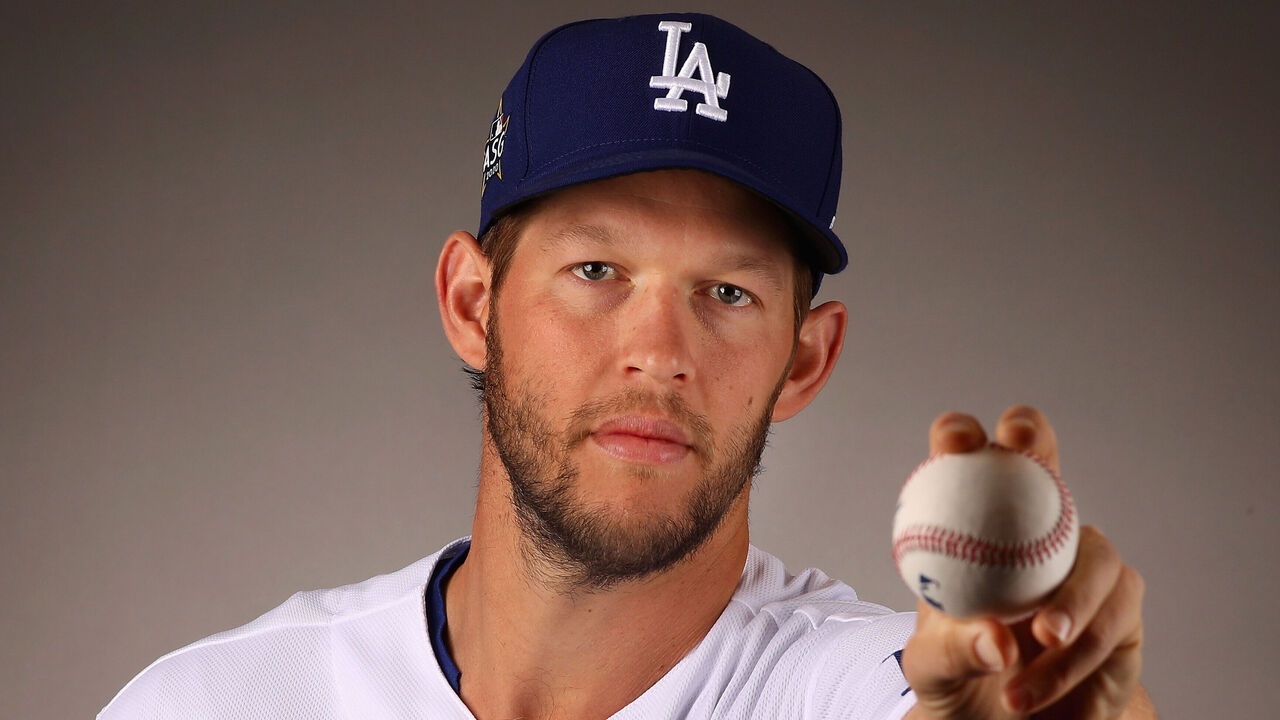25-man roster: The players ranked 6-10 in the last 25 years
There have been 25 MLB seasons since Mark McGwire and Sammy Sosa's home run chase in the summer of 1998, which captivated fans but ultimately led to questions that ended the steroids era.
The game has changed a lot since Roger Maris' single-season home run record fell, from testing for performance-enhancing drugs to the industry's entry into the data age. In 1998, there were a lot of home runs, but there was no PITCHf/x, no Statcast, and no FanGraphs.
theScore's baseball writer Travis Sawchik is using that consequential season as a frame in which to rank and discuss the top 25 players of the last 25 years.
Remember, the accomplishments and performance considered for each player cover only the 25 years in question. For example, Barry Bonds is the most dominant hitter since Ted Williams, but the last quarter century only covers the latter portion of his career.
Monday: Introductory essay and players 21-25
Tuesday: Players 16-20
Wednesday: Players 11-15
10. Barry Bonds

Era teams: San Francisco Giants 1999-2007
Signature performance: We'll include two, as they're consequential, asterisk-attached records that may stand for decades.
On Oct. 5, 2001, Bonds sent a pitch from Dodgers pitcher Chan Ho Park deep into the night sky and over the right-center wall at Pacific Bell Park for his 71st home run of the season, breaking McGwire's three-year-old record. Bonds finished the season with 73 home runs, a record that still stands today.
On Aug. 7, 2007, Bonds broke Hank Aaron's all-time home run record with career home run No. 756. Neither MLB commissioner Bud Selig - who oversaw the steroid era - nor Aaron was present. Bonds finished his career with 762 home runs.
Why he's here: Bonds is the trickiest case in this endeavor. When considering his total career, he's one of the top position players of all time alongside Babe Ruth, Willie Mays, and Ted Williams. But again, we're only considering his performance from 1999 and on. We're also discounting his performance - WAR and peak WAR - by 10% as a penalty for suspected steroid use. And despite all that, despite playing only nine of his 22 career seasons in this period, he still cracks the top 10. That speaks to how utterly dominant he was.
While Bonds hit only 351 of his career home runs in this era, ranking 20th, that's partly because teams were terrified to pitch to him - terrified in a way we've never seen before or since. He posted a .505 on-base mark for the era, 85 points better than No. 2 Manny Ramirez. Consider that the top three intentional walk seasons of all time all belong to Bonds, and all three occurred in this era: 120 in 2004, 68 in 2002, and 61 in 2003. The next closest all time was Willie McCovey's 45 in 1969, followed by Albert Pujols' 44 in 2009.
Players have compiled only 19 seasons with an on-base percentage of .500 or better in the game's history, and Bonds owns four of them, occurring in successive seasons from 2001-04.
A year after hitting 73 homers, Bonds walked 198 times - one-third of his plate appearances. In 2004, he walked in 37% of his plate appearances, and posted an MLB-record 232 walks against 41 strikeouts. No other player owns a 200-walk season. The free passes limited him to 373 at-bats, yet he still hit 45 home runs.
Bonds authored four consecutive seasons of 10-plus WAR in that span. No one had posted four consecutive double-digit WAR seasons since Williams, whose stretch was interrupted by World War II.
Bonds also owns the top OPS season of all time (1.421 in 2004), fueled by an absurd .362/.609/.812 slash line.
There's never been a performance stretch like it, and fans wanted to see Bonds dominate.
The Giants led the NL in attendance each of those four seasons, and it was the first time they'd led since they played at Polo Grounds in New York in 1944.
But how much of Bonds' production was artificially enhanced? We'll never know for certain. What we know is he was a Hall of Fame talent before his suspected usage began, and that he was among the greatest players of all time.
9. Mookie Betts

Era teams: Boston Red Sox 2014-19, Los Angeles Dodgers 2020-present
Signature performance: In 2018, Betts became the only player in AL history to win an MVP, World Series, Gold Glove, and Silver Slugger in the same season.
Why he's here: Betts may be the best athlete to play Major League Baseball in the era. Last season, he transitioned from being the game's best defensive right fielder to one of its best defensive second basemen. He could probably play anywhere on the field and do it well (he's moving to shortstop this season). He gets the most out of his power despite being a relatively diminutive 5-8 and 180 pounds. He's a master at manipulating his bat's barrel and maximizing his kinetic sequence. When he was coming through the Red Sox farm system, officials said he had the best hand-eye coordination they'd ever seen. He's even bowled 300 games.
Betts is a remarkable five-tool player. He's won six Gold Gloves in right field, a testament to his range, athletic catches, and accurate arm. He's also won six Silver Sluggers. He led the AL in batting average and slugging percentage in his 2018 MVP season. He owns a 30-30 season and could steal more if he wanted. He owns a .294/.373/.527 career slash line.
He's an athletic marvel, but his other superpower is how much he's willing to work to get the most out of his talent. Betts is never satisfied. Already a great player, Betts wasn't happy with his 2022 season - in which he posted 35 home runs and a 145 wRC+. He decided to retool his swing in the offseason at Driveline in Seattle.
"I just want to be the best player I can be," Betts told theScore. "I was falling short."
Driveline coaches put him on a program to add bat speed, and Betts responded with a career-best 39 home runs last season, along with a .307 average, and finished second in NL MVP voting.
J.D. Martinez, a teammate in both Boston and L.A., once told me Betts illustrates a rare baseball makeup.
"I have this little theory. When I think about the best players, I think what makes people so good is when they have that insecurity about themselves because they don't want to fall off. It keeps them working. I feel like (Betts) had that little doubt. Other guys have good years and they won't make the change. He was like, 'Dude, I have to figure this out. I don't have it figured out.'"
8. Randy Johnson

Era teams: Arizona Diamondbacks 1999-2004, 2007-08; New York Yankees 2005-06; Giants 2009
Signature performance: For some, it's his 2001 World Series performances. Johnson and Curt Schilling were named co-MVPs for their efforts in a seven-game series win over the Yankees. Johnson went 3-0 in the series, making three appearances - two starts - and allowing only two runs over 17 1/3 innings.
For others, it will always be this:
Why he's here: Johnson is Exhibit A in why a club should never give up on a young pitcher.
When he was traded to the Seattle Mariners for Mark Langston in May 1989, Johnson continued to have serious command issues. He led the AL in walks with the Mariners in 1990 (120), 1991 (152), and 1992 (144). Then, one day in August 1992, Texas was in Seattle. Rangers star Nolan Ryan and pitching coach Tom House went over to watch a struggling Johnson throw a bullpen. Ryan wanted House to have a look at him.
After watching a few throws, House made a suggestion: Instead of landing on the heel of his right foot in his delivery, Johnson ought to land on the ball of his foot. It changed everything.
In 125 1/3 innings up until that point in the season, Johnson had a 4.52 ERA and walked 97.
After the bullpen session, Johnson posted a 2.65 ERA over 85 innings and struck out 117 while cutting his walks to 47 - a reduction of about two walks per nine innings.
In a discussion with Ryan for a magazine piece in 1996, Johnson said: "It's unheard of, unfortunately, to have other people on another team take the time to help another professional athlete. You and Tom House didn't have to help me."
At 6-11, the extension on Johnson's release made it seem like he was releasing his 95-99 mph fastballs halfway to home plate. Then there was the fall-off-the-table slider. He'd always been difficult to hit, but with better command, he became almost impossible.
His four-year stretch from 1999 to 2002 is one of the most dominant of all time. He led the NL in strikeouts, surpassing 300 each season. His 372 strikeouts in 2001 is the 11th most all time, and the most in the era. He led the league in ERA in three of those four campaigns. He won four straight Cy Youngs. In 2002, he captured the pitching Triple Crown. These were his age 35-38 seasons. And he remained elite through age 40.
On May 18, 2004, Johnson became the oldest pitcher in MLB history to throw a perfect game, blanking the Braves 2-0 at Turner Field. Cy Young himself had previously been the oldest pitcher to hurl a perfect game, at age 37 in 1904.
Few were better than Johnson, and no one defied age like him.
7. Max Scherzer

Era teams: Diamondbacks 2008-09, Detroit Tigers 2010-14, Washington Nationals 2015-21, Dodgers 2021, New York Mets 2022-23, Texas Rangers 2023
Signature performance: On May 11, 2016, Scherzer struck out 20 batters against Detroit, becoming only the third pitcher to do so in a nine-inning outing. The feat is even rarer than a perfect game. It was the first 20-strikeout effort since Kerry Wood's in 1998.
Why he's here: Sandwiched between the two greatest left-handed pitchers of the era is the second-best right-handed pitcher.
Scherzer is an intense competitor, often displaying his emotion on the mound. He scowls, he talks to himself, he'll scream into his glove. After breaking his nose and suffering a black eye during a routine bunting drill in 2019, he stepped on the mound the next day and struck out 10 over seven scoreless innings.
In addition to his intensity, he's known for a nasty assortment of pitches, and his unorthodox, violent delivery, in which he jerks forward from the rubber and finishes with a head snap toward the first-base line. Yet, he remains durable, logging 2,834 innings, ninth most in the era.
While it took some time for him to hone his command - he didn't become an All-Star until he was 28, the same year he won his first Cy Young - the stuff was always big. Scherzer's fastball and slider each rank No. 2 in the era according to FanGraph's pitch values.
He ranks first in strikeouts (3,367) in the era, and also first in strikeouts per nine innings (10.7) among pitchers who made at least 300 starts.
He was also one of the first stars to embrace analytics in the era. His late brother Alex, who studied economics and worked at Morgan Stanley, taught him to use data and analysis to his advantage. Early in his career, he cited a goal of being a 4-WAR pitcher per season. That mark turned out to be a middling season for him.
Scherzer has also pitched 143 postseason innings, striking out 171 batters to go along with a 3.78 ERA and 1.15 WHIP.
6. Clayton Kershaw

Era teams: Dodgers 2008-present
Signature performance: The Dodgers leaned on Kershaw in the expanded 2020 postseason. He won four of five starts, posted a 2.93 ERA, and struck out 37 batters in 30 2/3 innings, putting to rest critiques about his inability to rise to the moment in the playoffs.
Why he's here: He's the best left-handed pitcher of the era and one of the best lefties of all time.
While his herky-jerky delivery isn't as elegant as another Dodgers great, Sandy Koufax, it still produced deception and pinpoint command of an outstanding arsenal. Kershaw long featured a mid-90s fastball along with an excellent curveball and slider. All three were among the most valuable pitches of the era based on FanGraphs' pitch values. He was ninth among curveballs, second best among fastballs, and his slider was No. 1.
His curveball owns such a devastating 12-to-6 break, it once had Gregor Blanco nearly diving out of the batter's box before it snapped over the plate for a strike:
"That's embarrassing for a big leaguer," the late, great Dodgers broadcaster Vin Scully said during the 2015 game.
Pitchers with three elite pitches and durability are unicorns.
Kershaw threw the 14th-most innings of the era, 2,712 2/3, and posted the lowest ERA among starting pitchers (2.48). The only pitchers to post lower ERAs than Kershaw are elite relievers with far fewer innings pitched.
In a four-year stretch from 2011-14, he led both leagues in ERA, combining for a 2.11 ERA over 895 innings.
He's also one of two pitchers on our list to win an MVP and Cy Young, earning each after his remarkable 2014 season, when he led the majors in wins (21), ERA (1.77), ERA+ (197), and WHIP (0.857).
He's also the only pitcher on the list to play for only one franchise. The Dodgers are one of the winningest clubs of this period, and Kershaw is the face of the franchise for the era.
The series wraps up Friday with the top five.
Travis Sawchik is theScore's senior baseball writer.
HEADLINES
- Rivers reflects on 1st game back in NFL with Colts: 'It was a blast'
- Zion scores 18 in return to lift Pelicans past Bulls
- Adams in doubt for Seahawks showdown after re-injuring hamstring
- Warriors' Kerr calls again for gun control laws after shooting at Brown
- Sunday Rundown: Instant takeaways from Week 15 games